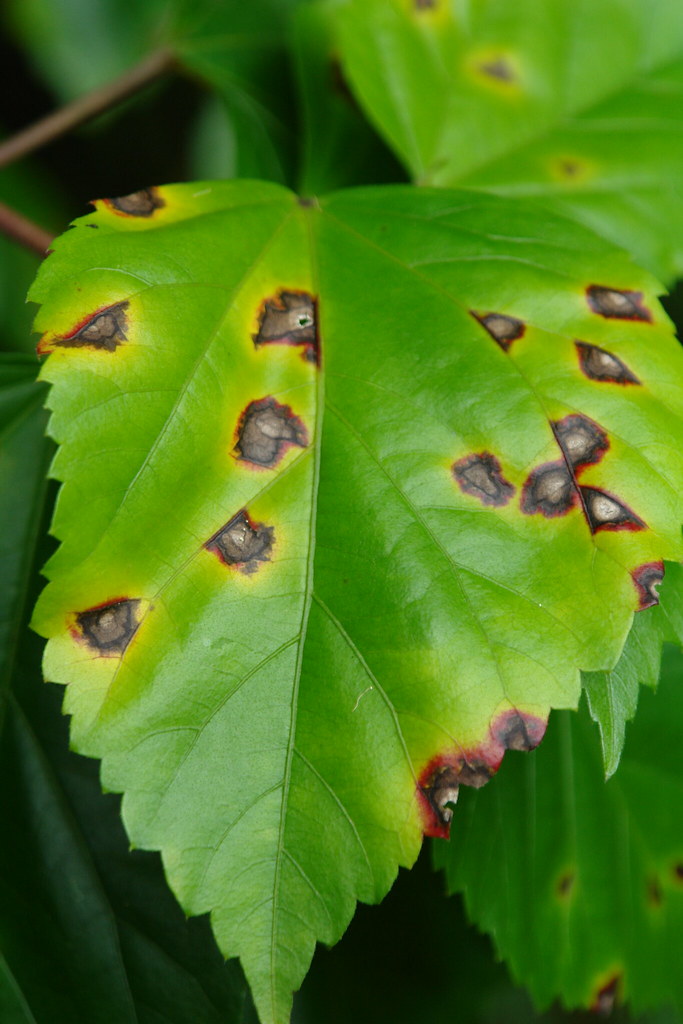
Leaf spot diseases
Phyllosticta zinniae
What is a Bacterial leaf spot (Xanthomonas campestris)?
Zinnia bacterial leaf spot is caused by Xanthomonas campestris, a Gram-negative bacterium that causes bacterial spot disease in affecting Zinnia plants and companion plants such as tomatoes and pepper. Symptoms include gray water-soaked areas on lower leaves, progressing to yellow or tan spots with brown and angular lesions. Individual lesions may have a yellow halo; severe cases can lead to disfigured flower heads. The bacteria can survive in dried leaves for up to a year and are seedborne.
How does Bacterial leaf spot (Xanthomonas campestris) occur?
These bacteria can survive in dried leaves for a long time and can also be found on the surface of seeds. When infected plants get wet from rain or sprinklers, the bacteria can splash onto healthy plants and cause the disease to spread. This usually happens when it's warm and humid. The bacteria multiply quickly and make spots on the leaves, which are the visible signs of the disease.
Symptoms
1 - Plants Health and soil
• The disease can cause significant damage to plants, particularly affecting the foliage and flower heads. • Infected leaves develop spots and lesions, leading to leaf discoloration, decay, and potential defoliation. Severe infections can also distort flower heads, reducing their aesthetic value and overall quality.
Solutions
1 - • The disease can cause significant damage to Zinnia plants, particularly affecting the foliage and flower heads. • Infected leaves develop spots and lesions, leading to leaf discoloration, decay, and potential defoliation. Severe infections can also distort flower heads, reducing their aesthetic value and overall quality. • The disease has limited direct environmental impact.
• Choose cultivars that are resistant to bacterial leaf spot if available. • Remove and destroy any infected plant material, including fallen leaves or flowers, to prevent the spread of bacteria. • Avoid overhead irrigation and watering late in the day to minimize leaf wetness, which creates favorable conditions for bacterial growth and spread. • Plant Zinnias with adequate spacing to promote good air circulation, as this helps reduce humidity and minimize the spread of bacteria.
2 - Biological control
Consider using biological control products like Cease or Rhapsody (Bacillus subtilis strain QST 713) Another option is Stargus (Bacillus amyloliquefaciens strain F727) and Triathlon BA (Bacillus amyloliquefaciens strain D747) is also effective.
3 - Chemical Control
• Bactericides: While bacterial leaf spot is challenging to control with chemicals, some bactericides may provide limited efficacy. Consult with local agricultural extension services or experts for approved products and proper application guidelines. • Treat seeds with a diluted bleach solution (10%) for 15 to 30 minutes to reduce the risk of seedborne contamination.
